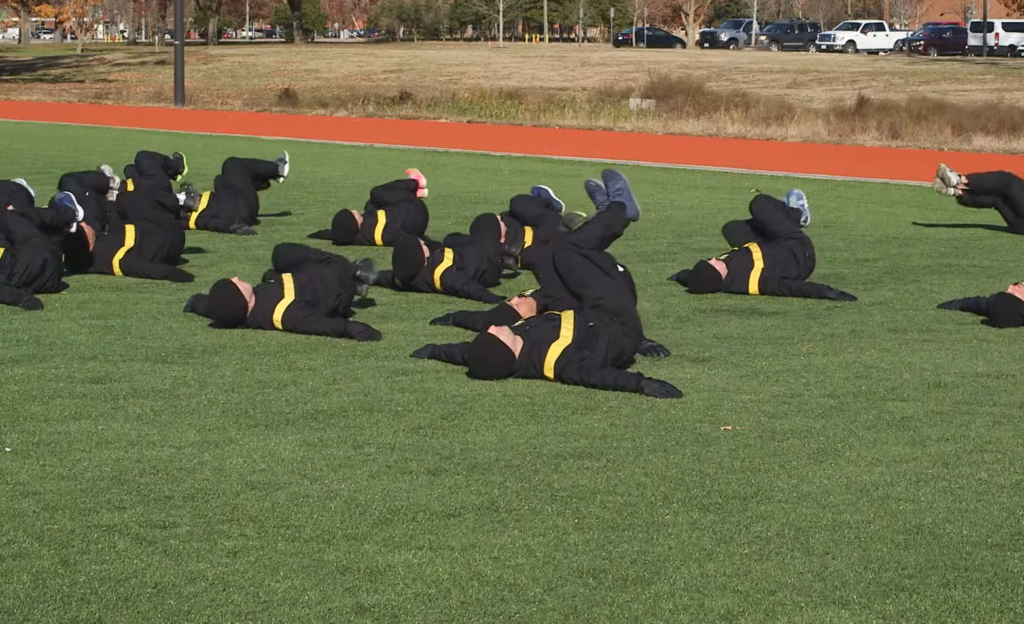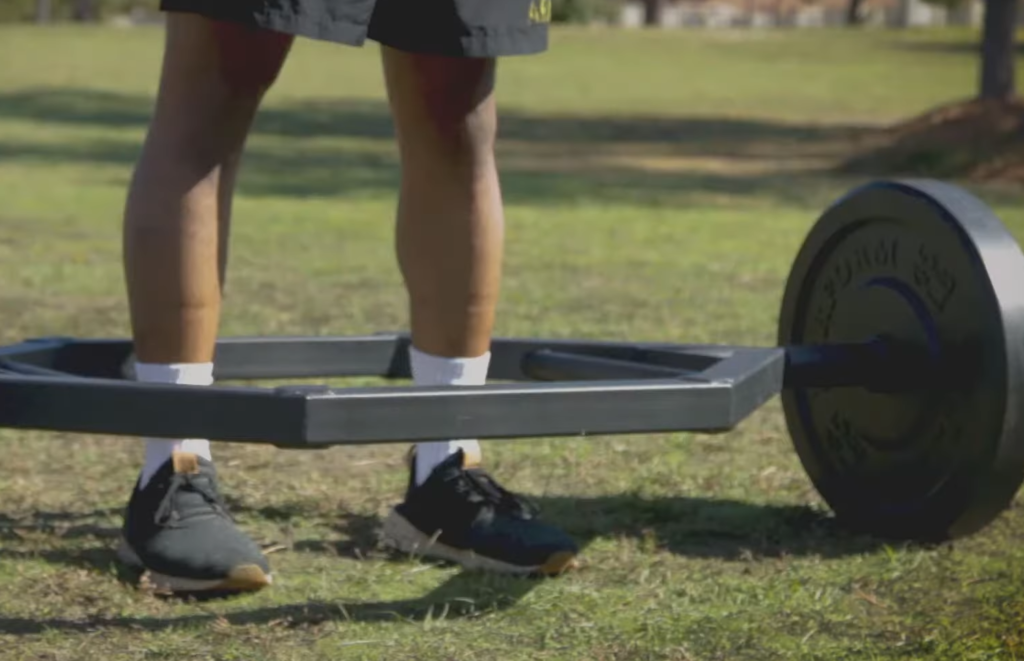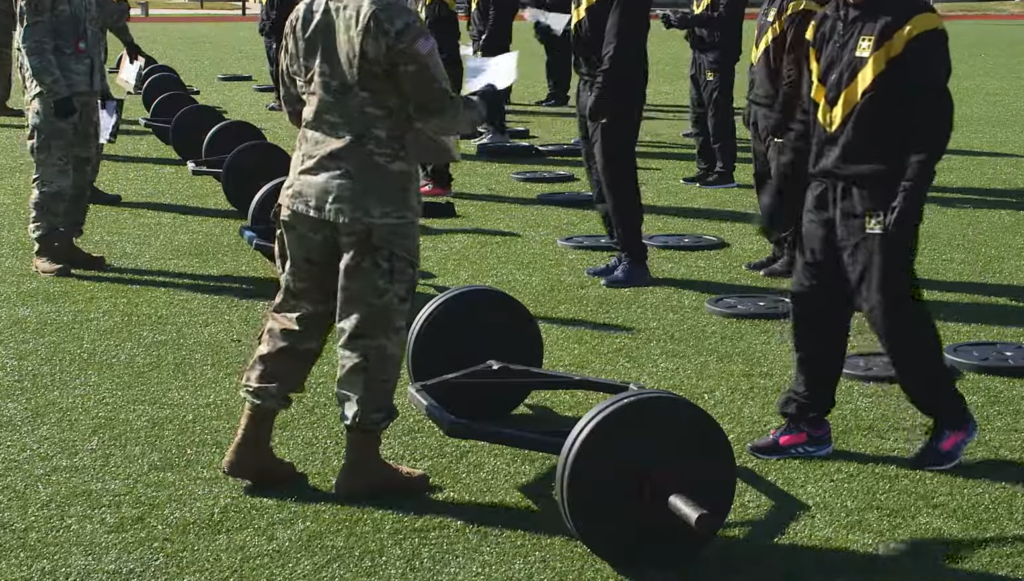The Army Combat Fitness Test (ACFT) represents a significant evolution in the United States Army’s approach to assessing soldier fitness, emphasizing physical demands akin to those encountered in combat situations. This comprehensive physical assessment not only evaluates a soldier’s strength, endurance, and agility but also underlines the readiness demanded by their military occupational specialties (MOS).
The ACFT is meticulously structured into six diverse events, each carefully designed to test distinct areas of physical capability. The order of the ACFT events is strategic, ensuring that soldiers are tested in a manner that reflects real-world physical tasks, preparing them for the complexities of modern warfare while aiming to reduce injury risk through a balanced physical challenge.
Can Everyone Pass the New US Army Combat Fitness Test (ACFT)?
The United States Army has a long history of rigorous fitness standards, designed to ensure that its soldiers are in top physical condition for the demands of combat. In recent years, the traditional Army Physical Fitness Test (APFT) underwent a significant overhaul, resulting in the implementation of the Army Combat Fitness Test (ACFT). But with the new challenges presented by these changes, a question looms: Can everyone pass the ACFT?
The ACFT is structured to be a gender and age-neutral test, reflecting the actual physical demands of being on the battlefield. The test consists of six events which were developed based on scientific analysis and after years of review [1]. These events aim to cover the full spectrum of fitness, from strength to endurance, and from speed to agility. However, this also means that the difficulty level has increased compared to the APFT, raising concerns among some service members about their ability to meet the standards.

When Will the Army Require You to Take the ACFT?
The Army began field testing the ACFT in 2019, and it was initially scheduled for full implementation by October 2020 [2]. However, the COVID-19 pandemic caused delays in this rollout. As of my knowledge cutoff date in March 2023, the latest information indicated that the ACFT would become the standard of record for all Army personnel in April 2022. Please note that dates might have changed since then, and those looking for the most current information should reach out to official military sources.
Given the pandemic’s impact, there has been a phase-in period to allow soldiers to familiarize themselves with the new requirements and to train accordingly. The transition period has been beneficial as it allowed both the Army and the soldiers time to adjust to the new physical demands.
6 Mandatory ACFT Events And Alternate Events
The ACFT features six mandatory events that challenge different physical capabilities. These events include:
- 3-Repetition Maximum Deadlift (MDL): This event tests lower-body strength and requires soldiers to perform three deadlifts with increasing weight;
- Standing Power Throw (SPT): Soldiers toss a 10-pound medicine ball backward as far as possible to gauge explosive strength;
- Hand-Release Push-Up (HRP): A modification of the traditional push-up, this event measures upper-body endurance;
- Sprint-Drag-Carry (SDC): This event mimics battlefield movements, with soldiers sprinting, dragging a sled, and carrying kettlebells in a shuttle run format;
- Leg Tuck (LTK): An exercise that assesses core strength where soldiers must hang from a pull-up bar and bring their knees to their elbows;
- Two-Mile Run (2MR): A staple of the Army’s fitness test, this event judges cardiovascular endurance;
To accommodate for injuries or other medical conditions, there are alternate events available. These alternate events include the 2.5-mile walk, the 5,000-meter row, the 12,000-meter stationary bike, and the 1,000-yard swim [3]. All of these are designed to provide equivalent cardiovascular assessments without the high impact of the two-mile run.

What Are ACFT 4.0 Standards?
[tds_note]The ACFT 4.0 is the latest iteration of the Army Combat Fitness Test, designed to further refine the evaluation of soldiers’ physical readiness. The goal of ACFT 4.0 standards is to provide a fair assessment of a soldier’s ability to perform tasks that are critical to combat operations [4]. These standards are calibrated to be achievable yet challenging and are categorized by the different Military Occupational Specialties (MOS) according to their physical demands.[/tds_note]
Soldiers are tested on a 100-point scale for each event, with a minimum score required to pass. The minimum passing scores are MOS-specific and reflect the physical demands of the soldier’s assigned duty. Under ACFT 4.0, the standards have evolved to ensure a more accurate reflection of operational requirements.
The grading scale is tiered into three levels, representing different physical demand categories:
- Gold: For heavy physical demand MOS. Soldiers in these roles must score at least 70 points per event;
- Gray: For significant physical demand MOS. The minimum score per event is 65 points;
- Black: For moderate physical demand MOS. Soldiers need to achieve a minimum of 60 points per event to pass;
The ACFT is not just a mere fitness test — it’s an assessment closely tied to combat readiness. It’s designed with the intent that all soldiers, regardless of MOS, gender, or age, should be able to meet the minimum standards with proper training and preparation.
How to Perform Army ACFT Events In Order:
The Army Combat Fitness Test (ACFT) is designed to better connect fitness with combat readiness for soldiers. The ACFT consists of six events that must be completed in sequence. Each event reflects a key aspect of physical fitness and mirrors the strength, power, speed, and endurance needed on the battlefield.
Here’s how to perform each event in the order they are administrated during the test:
1st ACFT Event – The 3 Repetition Maximum Deadlift
Objective: This event measures lower body strength and involves lifting weights off the ground until the knee and hip joints are fully extended.
Equipment: A hex bar loaded with weights.
Execution:
- Step into the center of the hex bar and assume a symmetrical stance with flat feet;
- Squat down and grip the handles with palms facing inward;
- Keep your back straight and eyes forward as you lift the weight by extending your hips and knees;
- Complete three continuous repetitions without resting the bar on the ground between lifts;
- Return the weight to the ground under control after the third repetition;
- Proper form is essential to prevent injury and to ensure the lift counts toward your assessment;

2nd ACFT Event – The Standing Power Throw
Objective: To measure upper-body power and explosive strength.
Equipment: A 10-pound medicine ball.
Execution:
- Stand with your back to the throwing area, grasping the medicine ball with both hands at hip level;
- Lower into a semi-squat, then swing the ball between your legs;
- Explosively extend your hips, knees, and ankles while simultaneously swinging the ball upward and forward over your head;
- Release the ball in a backward motion over the head to achieve maximum distance;
- Your best throw out of two attempts will be recorded;
3rd ACFT Event – The Hand-Release Push-Up
Objective: This event assesses upper-body muscular endurance.
Execution:
- Start in the traditional push-up position: hands shoulder-width apart, arms fully extended, and body forming a straight line from shoulders to ankles;
- Lower your body to the ground with control;
- Once your chest touches the ground, lift your hands off the ground, keeping your body straight;
- Quickly place your hands back in their original position and push up to the starting position;
- Repeat for the maximum number of repetitions within the allotted time;
- Ensure that the body remains rigid throughout the movement for the repetition to count [5];
4th ACFT Event – The Sprint-Drag-Carry (SDC)
Objective: This event assesses agility, strength, and anaerobic endurance.
Execution: Complete the following five 50-meter shuttles as fast as possible:
- Sprint: Sprint downrange 25 meters, touch the line with your hand or foot, turn, and sprint back to the starting line;
- Drag: Pull a sled weighted with 90 pounds for males and 60 pounds for females 25 meters and back;
- Lateral: Move laterally, touching each line with a hand or foot, shuffling 25 meters and back;
- Carry: Grab two 40-pound kettlebells for males and 25-pound for females and move briskly 25 meters and back;
- Sprint: Perform another 50-meter sprint as described in the first shuttle;
Transition quickly between activities, ensuring proper completion of each task.

5th ACFT Event – The Plank
Objective: This event measures core strength and endurance.
Execution:
- Begin in the elbow plank position, with forearms on the ground and elbows aligned below the shoulders;
- Your body should form a straight line from the ears to the ankles;
- Engage your core and maintain this position without sagging or arching the back;
- Hold for the maximum duration within the time limit or until the form falters;
- This event has replaced the leg tuck as an alternative core strength assessment;
6th ACFT Event – The 2 Mile Run Event
Objective: To determine aerobic endurance.
Execution:
- Start from a standing position behind the start line;
- Begin running at your own pace, aiming to maintain a consistent speed throughout;
- Complete eight laps on a standard quarter-mile track or the designated 2-mile course;
- The goal is to finish the run in the shortest time possible, so pacing and stamina are crucial;
[tds_note]Each event has specific scoring standards based on MOS-specific physical demands. Soldiers are encouraged to train regularly and familiarize themselves with the execution of each event to improve their scores and overall fitness. The ACFT is a comprehensive test of a soldier’s physical capability and readiness for combat, and mastering these events is key to success.[/tds_note]
How To Perform Your Best on the ACFT: Tips And Techniques
Get Familiar With Events, Standards, and Male/Female Scoring
Before diving into ACFT preparation, it’s essential to thoroughly understand the events, standards, and scoring system. Each event is designed to assess specific physical attributes, and knowing what to expect can guide your training strategy.
Events Overview:
- Three Repetition Maximum Deadlift;
- Standing Power Throw;
- Hand-Release Push-Up;
- Sprint-Drag-Carry;
- Leg Tuck;
- Two-Mile Run;
Standards and Scoring:
- Familiarize yourself with the scoring criteria for each event. Understand the point system and the performance levels (maximum, substantial, moderate, and minimal);
- Take note of the standards for your age and gender, as scoring differs between male and female soldiers;
Learn The Minimum Requirements Per MOS
Each Military Occupational Specialty (MOS) has specific physical demands, and the ACFT recognizes these differences. Understanding the minimum requirements for your MOS is crucial for targeted training. Consult your unit’s leadership or the Army’s official guidelines to determine the specific standards applicable to your role [6].
Specialized Training:
- Identify the physical demands of your MOS and tailor your training to address those specific requirements;
- Seek guidance from experienced soldiers in similar roles to gain insights into the challenges you may encounter;
Learn and Incorporate the Principles of Training
To optimize your ACFT performance, consider incorporating fundamental principles of training into your workout regimen.
These principles can help structure your training program effectively:
Progressive Overload:
- Gradually increase the intensity, duration, or frequency of your workouts to stimulate continuous improvement;
- Adjust your training program to mirror the progressive demands of the ACFT events;
Specificity:
- Tailor your workouts to mimic the movements and intensity of the ACFT events;
- Focus on event-specific training to enhance your performance in each component;
Recovery:
- Allow adequate time for rest and recovery between intense training sessions to prevent burnout and reduce the risk of injuries;
- Prioritize quality sleep and nutrition to support your body’s recovery process;
Train Smarter, Not Harder
Efficiency in training is crucial to avoid burnout and achieve sustainable progress. Here are some tips for training smarter:

Periodization:
- Implement a periodized training approach with distinct phases such as preparatory, strength-building, and peaking phases leading up to the ACFT;
- Adjust your training focus based on your proximity to the test date;
Skill Development:
- Dedicate time to perfecting the techniques required for each ACFT event;
- Seek guidance from experienced trainers or coaches to refine your form and maximize efficiency;
Cross-Training:
- Incorporate diverse training modalities to address various aspects of fitness;
- Include strength training, cardiovascular conditioning, and flexibility exercises to ensure a well-rounded approach [7];
Mental Conditioning:
- Develop mental resilience and focus through visualization and mindfulness techniques;
- Practice mental conditioning exercises to enhance your ability to perform under stress;
FAQ:
1. What is the order of the ACFT test?
The ACFT is conducted in the following order: 1) 3 Repetition Maximum Deadlift, 2) Standing Power Throw, 3) Hand-Release Push-Up, 4) Sprint-Drag-Carry, 5) Plank, and 6) 2 Mile Run.
2. What are the 3 mandatory ACFT events?
All six events are mandatory for the ACFT: Deadlift, Power Throw, Push-Up, Sprint-Drag-Carry, Plank, and the 2 Mile Run.
3. What are the ACFT changes for 2024?
As of 2024, there may have been updates or changes to the ACFT. Please check with official Army sources or the most recent Army publications for any updates to the ACFT for 2024.
4. How much time is between each ACFT event?
Soldiers can expect variable rest times based on the testing conditions and number of personnel but generally, a minimum of 2 minutes and maximum of 5 minutes rest between events is standard.
5. What is the most failed ACFT event?
Historically, the Leg Tuck event, which has been replaced by the Plank, was among the most challenging for many soldiers. However, failure rates can vary by event and over time as training adapts.
6. What is a good ACFT score?
A good ACFT score would meet or exceeds the gold standard, typically scoring above 70 points per event. The exact score considered “good” can depend on the branch, MOS, and unit requirements.
7. How many times can you fail the ACFT?
The Army’s policies on failure can change, so it is best to consult the most current regulations. Traditionally, failing an ACFT could lead to retesting and potential administrative actions if failures persist.
8. Can you change shoes during ACFT?
Yes, soldiers are permitted to change shoes between events if necessary, as long as it does not delay the test.
9. Can you take an ACFT on your profile?
Soldiers with a profile may take a modified ACFT based on their profile limitations, which must be approved by medical personnel.
10. Can you listen to music during ACFT?
No, personal music devices are not authorized during the ACFT for safety and communication reasons.
11. Is ACFT better than APFT?
The ACFT is designed to be a more comprehensive and combat-focused physical fitness test compared to the APFT. Whether it is “better” can be subjective and dependent on individual perspectives on its efficacy and fairness.
12. Can you wear AirPods during ACFT?
No, for safety and communication reasons, soldiers cannot wear Airpods or any similar devices during the ACFT.
13. Why is the ACFT not gender-neutral?
The ACFT is designed to be gender-neutral, with standards based on job demands rather than gender. However, there has been debate and adjustments to ensure fairness across all demographics.
14. How can you improve your ACFT score?
Improving your ACFT score involves targeted training for each event, focusing on strength, endurance, and technique, as well as overall physical conditioning and proper rest and nutrition.
15. What is the lowest passing score for ACFT?
The lowest passing score is typically 60 points per event according to the Army standards for moderate physical demand MOS.
16. What is the minimum plank time for ACFT?
As of early 2023, the minimum plank time was 2 minutes for the plank event to pass.
17. How heavy is the ACFT ball?
The medicine ball used in the Standing Power Throw weighs 10 pounds.
18. What is the national average for ACFT?
The national average for the ACFT will vary as data is collected and analyzed. It’s best to refer to the most recent statistics from Army reports.
19. What is the Black standard for ACFT?
The Black standard is the highest category of physical demand levels within the ACFT, often requiring scores of 70 points or higher in each event.
20. How heavy are the kettlebells for the ACFT?
For the Sprint-Drag-Carry event, men use 40-pound kettlebells, and women use 25-pound kettlebells.
21. How long is an ACFT valid for?
Typically, an ACFT score is valid for one year from the date the test was taken.
Useful Video: ACFT Event 4 Sprint Drag Carry
References:
- https://www.army.mil/e2/downloads/rv7/acft/acft_field_testing_manual_final.pdf
- https://newpttestarmy.com/acft-info/acft-events/
- https://www.armycombatfitnesstest.com/
- https://www.dummies.com/article/academics-the-arts/study-skills-test-prep/armed-services/scoring-for-the-6-acft-events-283745/
- https://www.militaryspot.com/enlist/army-combat-fitness-test-acft
- https://www.reddit.com/r/army/comments/14ftv41/still_a_three_event_minimum_for_the_acft/
- https://mtntactical.com/shop/army-combat-fitness-test-acft-training-plan/






Leave a Reply